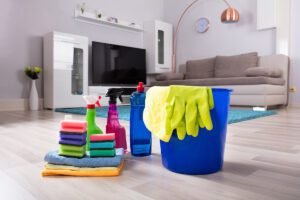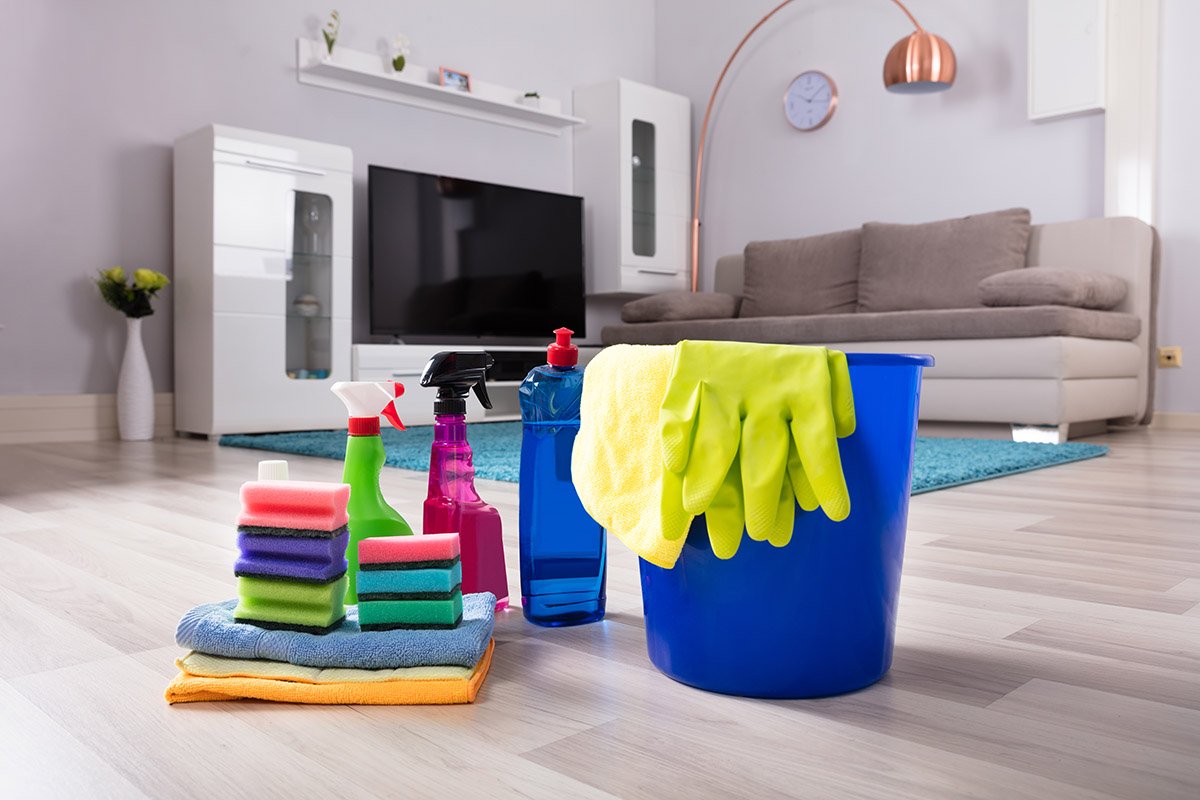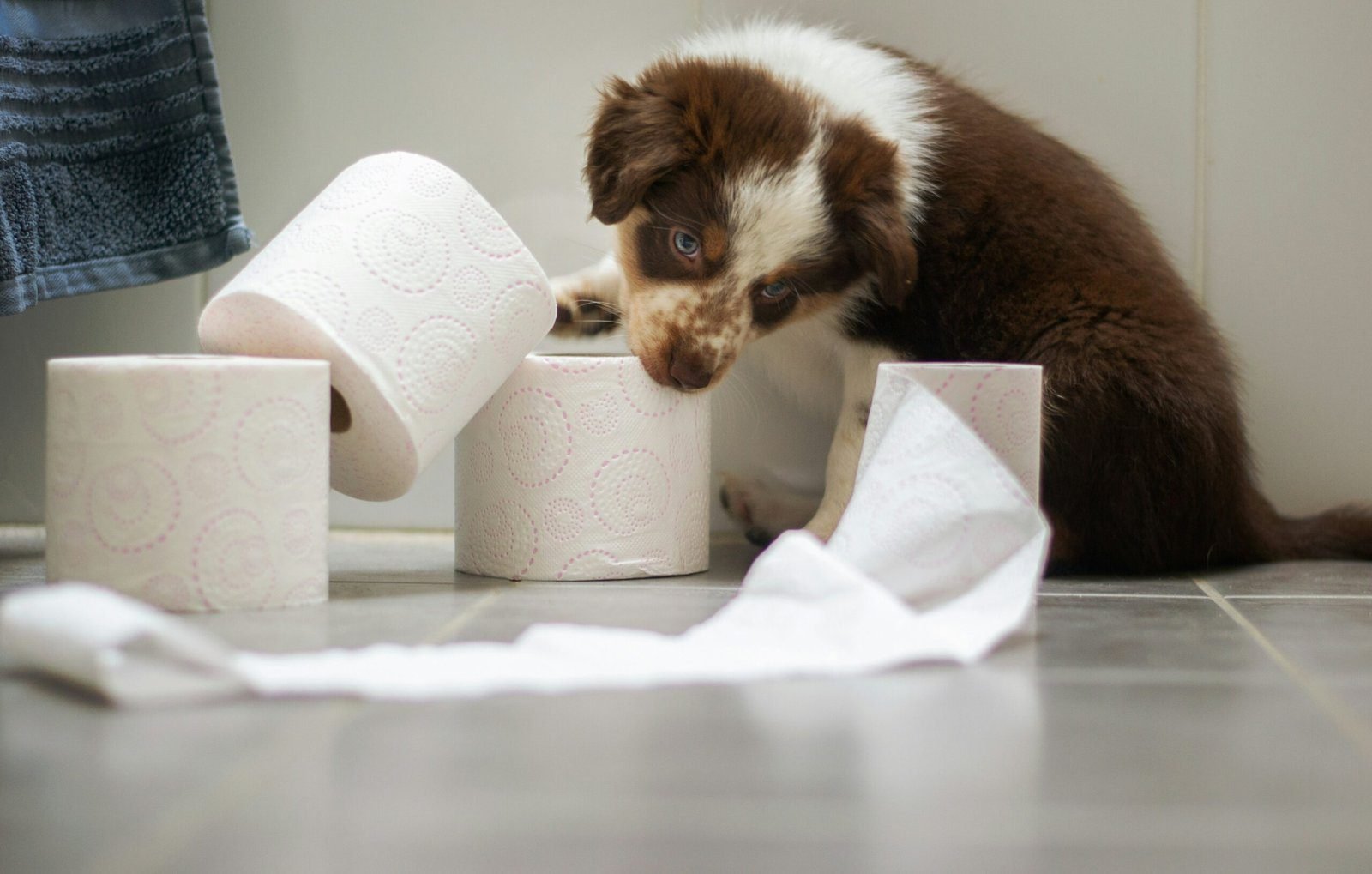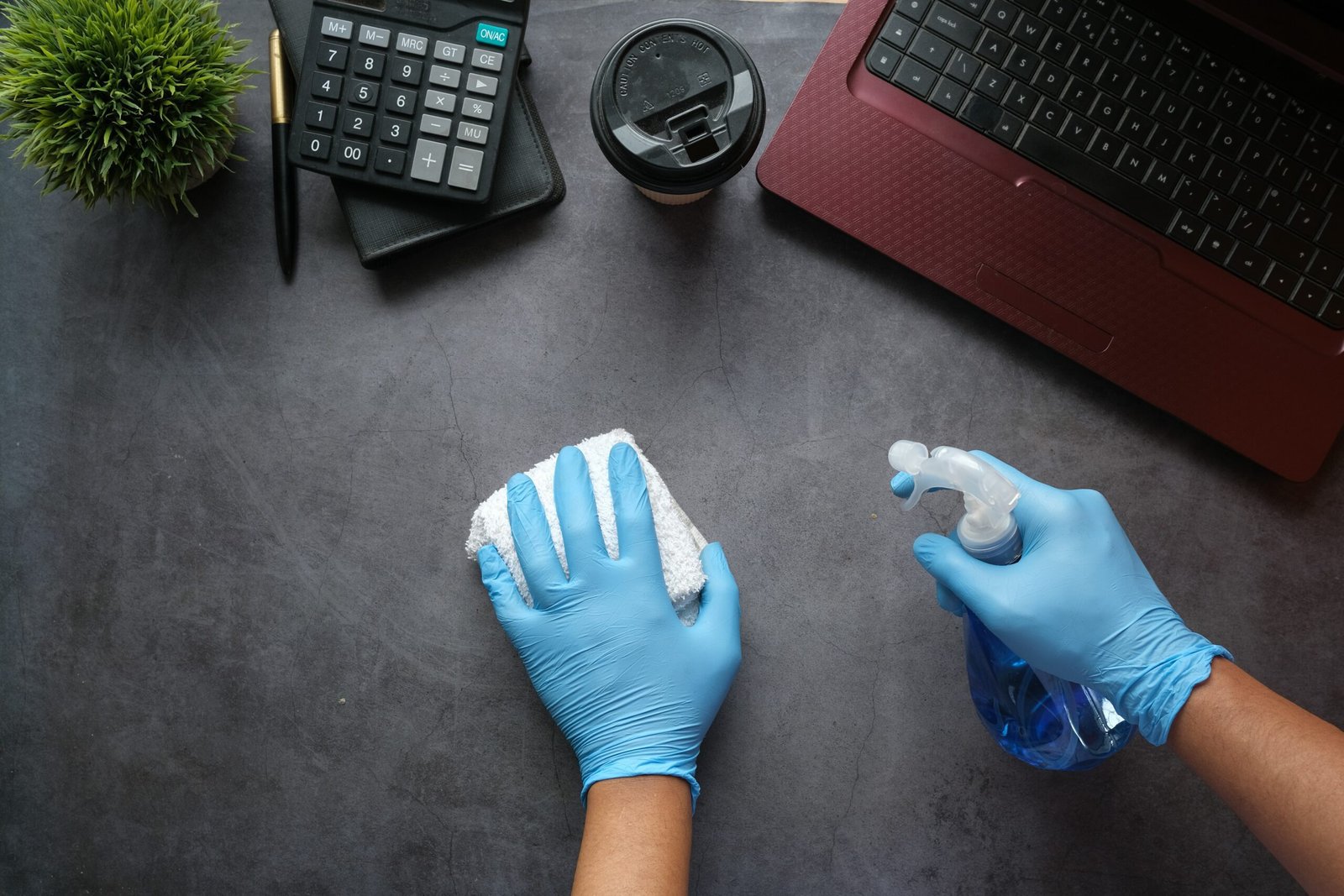Keeping a shared space, work or home, thoroughly clean is made much easier with a Colour Coded Cleaning system. It’s a popular method of ensuring you’re using best practice in your workspace, and your home.
If the past few years have taught us anything, it’s that hygiene really matters. A pandemic will make that pretty obvious!
And the more people share a space, the more important it is to keep it clean and germ-free. When that space is your workplace it’s especially important to make sure it’s safe for people to be.
What is a Colour Coded Cleaning System?
Let’s start by understanding what a Colour Coded Cleaning system actually is.
It involves using different colours for the cleaning equipment in each area of your workplace. By making it clear where particular pieces of kit must be used, you eliminate the risk of cross-contamination.
Think of it as a visual language that everyone in your cleaning team can understand. At a glance, anyone can identify which tools and products they should use in a particular area.
Why Should You Use Different Colours in Different Areas?
Let’s get down to the nitty gritty. Even in a small office, there is generally a kitchen area – somewhere to make a coffee or cobble together lunch.
You’ll have a toilet area too.
And I think you’ll agree that the cloths, mops and brushes used to clean the loo should never come anywhere close to being used in your kitchen!
It’s the same with your office, reception, and any other area of your business premises. When you think about it, would you really be happy with your desk being wiped down with the cloths that cleaned the kitchen sink?
Ok, most office cleaning staff are not going to do anything that daft. But what if you have a new member of the team, or you need to get a contractor in who doesn’t know what’s what?
Avoid The ‘Ick’ Factor!
Having a defined system that uses colour coding to make it entirely clear what cleaning equipment is used and where, which avoids any nasty mistakes!
After all, have you ever offered to wash the dishes at a friends house, and stood wondering which of these cloths and sponges clean the dishes, and which the floor?
Make it easy for your cleaning team to get it right.
When you do, you will:
- Minimise risk of infection
- Reduce the spread of viruses
And in a post-covid world, it serves us well not to forget how important those basic hygiene rules are
 Where is it useful to use a Colour-Coded Cleaning System?
Where is it useful to use a Colour-Coded Cleaning System?
Any business, or indeed home, would benefit from the clarity colour coding brings. But where is it most valuable?
Hospitality and catering – food, drink and lots of people? A veritable cacophony of germ-spreading possibilities! Thorough cleaning will already be a big part of your routine if this is where you work. It’s non-negotiable if you want to stay in business. So any system that guarantees there’s no confusion, no cross-contamination, no errors, has got to be a bonus.
Healthcare and salons – this goes without saying. In any healthcare premises hygiene is critical. Hospitals, dentists, therapists, though to salons and anyone offering treatments. Where there is close contact with other people, cleanliness is essential, and avoiding cross-contamination critical.
Education and retail – what do these have in common? Lots of people moving through an indoor space throughout the day. Of course they have restrooms, and most will have catering facilities. Both have public areas, and places for staff to relax. Keeping each area independently clean matters.
All other workplaces – anywhere with separate areas, especially loos and kitchens. Yours may be a simple system, but critical nonetheless.
Do I Have To Use a Colour Coded Cleaning System?
There is currently no legal requirement to use a colour coding. However, it is so useful in helping to keep the risk of infection and cross-contamination to a minimum that it makes perfect sense to adopt the system in your workplace.
 What do the colours mean?
What do the colours mean?
The British Institute of Cleaning Science (BICSc) breaks the colours into four areas.
- Red: Use in toilets and shower rooms – cross-contamination and infection are high-risk here.
- Green: For kitchens and food station areas. Cross-contamination is medium risk, but still needs containing.
- Blue: For general spaces such as offices and reception areas, where the risk of cross-contamination is relatively low.
- Yellow: This would generally be used for clinical areas in hospitals or healthcare facilities. It might serve for a first aid room.
These are recommended designations, though it isn’t compulsory to use those colours for those areas. However, common sense says it is best practice to stick to them. If you recruit a new team member who is used to a colour coding system, it could confuse them if yours is different.
We have a downloadable guide to the standard areas and colour designations.
You are welcome to grab a copy free of charge – you can get it by clicking here.
How to set up and maintain your colour coded cleaning system
Implementing a colour coded cleaning system is just the first step. To ensure its success, it’s important to establish guidelines for your team to follow.
Here are a few tips to help you maintain the system:
- Educate and train your team: When your team understand the benefits of using colour coding, they will be right on board. Provide thorough training sessions and educational materials to ensure that every member of your cleaning team knows the system and how to implement it.
- Regularly inspect and monitor: Conduct routine inspections to ensure that the system is being followed correctly. This will help identify any misunderstandings or areas that need improvement.
- Reinforce the system: Continuously remind and reinforce the importance of the system to your team. Celebrate successes and address any challenges that arise.
- Update and adapt: As your facility or cleaning needs evolve, regularly review and update your colour coded cleaning system to ensure it remains effective.
 What Equipment Do You Need For A Complete System?
What Equipment Do You Need For A Complete System?
To implement a complete colour coded cleaning system, you’ll need a range of equipment that matches your designated colours.
Here are some essential items to consider:
- Microfibre and general cleaning cloths: Versatile, reusable cloths for cleaning tasks in each area. You can get them in a range of colours to suit your needs.
- Mops, brushes and handles: Again, available in a range of colours and styles.
- Spray bottles, buckets and containers: You may use the same chemicals in different areas of your business, but you don’t want the containers being used in the wrong places. Keeping your solutions in colour coded spray bottles or buckets will avoid that.
- Paper products and refuse sacks: paper towels or rolls will help you to keep your designated areas separate, while colour coded refuse sacks will help keep rubbish under control.
- Storage and organisation: use colour coded bins, caddies, or shelves to store and organise your cleaning products, tools, and equipment.
By having the right tools and equipment in place, you’ll ensure the efficiency and effectiveness of your system.
Shopping For Your Colour-Coded Cleaning System
If you agree that colour coding your workspace areas is a great idea, you can get all the equipment you need right here on our Cleaning Supplies 2U website.
Any advice or information you need, you can ‘Contact us’ or phone 01606 863637 and we’ll be happy to help you.
You’re Ready to Achieve Colour Coded Cleaning Excellence
Using colour coding will revolutionise your cleaning routine. By implementing this system, you’ll promote a healthier environment for yourself, your staff and visitors.
Remember, consistency is key.
Regularly reinforce the importance of the system, train new members, and stay up to date with industry best practices.
You are now equipped to confidently embark on your colour coded cleaning journey.
Happy sanitising!






